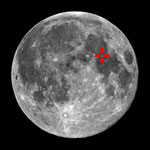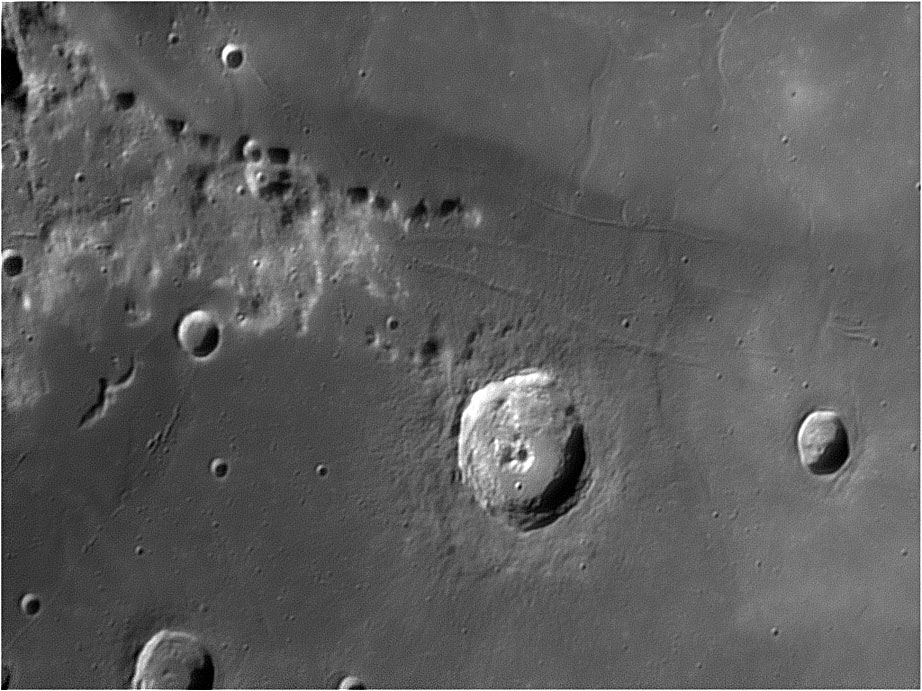|
 Plinius
est un cratère de 43 Km et profond de 2320 m situé sur la
frontière entre la mer de la Sérénité (Mare
Serenitatis) au nord, et la mer de la tranquillité (Mare
Tranquilitatis) au sud. Juste au nord de Plinius
s’étire sur 120 Km un système de rainures
appelés Rimae Plinius. Au Nord-ouest le Promontorium Archeruia,
un cap se prolonge jusqu’à Plinius. La muraille du
cratère est légèrement
ovale dans la forme, avec
un mur intérieur en terrasse, et un rempart externe
irrégulier. La partie nord est éboulée vers
l’intérieur. Le plancher du cratère est
accidenté avec au milieu une crête centrale
irrégulière et quelques craterlets.
Plinius
est un cratère de 43 Km et profond de 2320 m situé sur la
frontière entre la mer de la Sérénité (Mare
Serenitatis) au nord, et la mer de la tranquillité (Mare
Tranquilitatis) au sud. Juste au nord de Plinius
s’étire sur 120 Km un système de rainures
appelés Rimae Plinius. Au Nord-ouest le Promontorium Archeruia,
un cap se prolonge jusqu’à Plinius. La muraille du
cratère est légèrement
ovale dans la forme, avec
un mur intérieur en terrasse, et un rempart externe
irrégulier. La partie nord est éboulée vers
l’intérieur. Le plancher du cratère est
accidenté avec au milieu une crête centrale
irrégulière et quelques craterlets.
 (English version,
Wikipedia copyright)
(English version,
Wikipedia copyright)
Plinius
is a prominent lunar impact crater lies on the border between Mare
Serenitatis in the north and Mare Tranquilitatis in the south.
South-southeast of Plinius is Ross crater, and to the northeast is Dawes
crater. Just to the north is a system of rilles named the Rimae Plinius. At
the northwest edge of the rille is the Promontorium Archeruia, a cape off
the western rim that encloses the Mare Serenitatis.
The sharp rim of the Plinius crater is slightly oval in form, with a
terraced inner wall, and an irregular outer rampart. It lacks a visible ray
system. The crater floor is hilly, and in the middle is an irregular central
peak that has the appearance of a double crater formation under certain
angles of illumination. There is a cleft feature attached to the northern
side of the peak. The eastern half of the floor is much more smooth and
level than the hummocky west, and this section forms a crescent shape about
the central peak.
|



 Plinius
Plinius